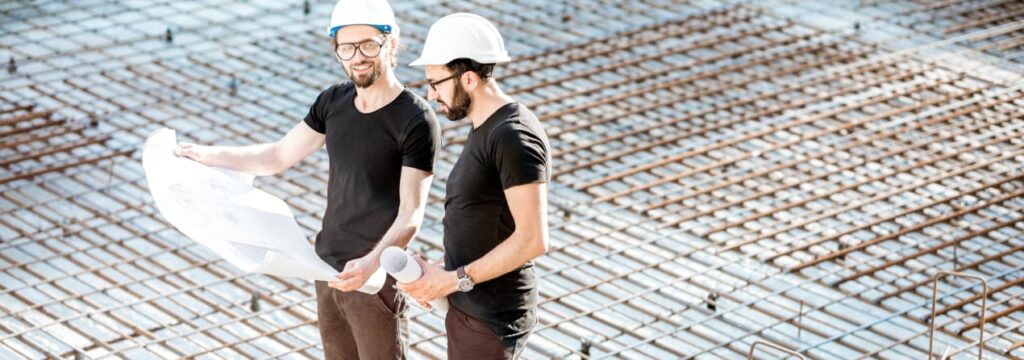Once Fibre Reinforced Polymer (more commonly known as FRP) has burst into the global market, its application fields are continuously expanding. It’s not just the properties of polymers that matter; several crucial factors influence the demand for FRP products. As of now, FRP rebar successfully supplants iron bars in many industries, starting from agriculture, chemical & pharmaceutical industries, and biomedical applications to civil and industrial engineering.
Content
Concrete Reinforcement: FRP vs Steel
Historically, concrete has earned its reputation as one of the most popular construction materials particularly when reinforced by steel bars to compensate for the meagre tensile strength and brittleness of concrete in the construction field. In its turn, bars made of iron are relatively inexpensive in the context of manufacturing costs. Unfortunately, in aggressive environments exposed to water and moisture, rust and corrosion reduce the overall durability.

Composite rebar that does not corrode has become a trusted replacement for steel bars in concrete structures, such as piers & decks, canals, jetties, offshore platforms, etc. Resistant to a myriad of chemicals and road salt, GFRP rebar has found its implementation in bridges and roads, foundations and retaining walls, wastewater treatment & petrochemical plants, and so on. As a non-conductive material, FRP doesn’t interfere with the operation of electrical devices and is used in military constructions, airport towers, and medical institutions equipped with MRI devices.
Besides durability, tensile strength, and low maintenance requirements, the cost-effectiveness of FRP products benefits from its lighter weight (around ¼ of a comparable steel bar): more rebar per truckload within loading limits, less heavy-lifting machines and cut tools needed, less load on construction workers involved in rebar installation. Better tensile strength-to-weight ratio results in a lighter weight of the final structures, which is of vital importance in poor load-bearing environments.
Scientifically Substantiated Benefits
The recent study carried out by Ginghis Maranan, Allan Manalo et al. (“An Overview of the Use of Composite Rebars as Reinforcement in Geopolymer Concrete Structures”) has demonstrated that composite rebar represents a greener, more durable and cost-effective solution for construction applications. Being lighter weight and more corrosion resistant, FRP composite products have replaced steel bars in concrete structures across many fields, particularly for projects in aggressive media, such as marine construction, the chemical industry, and civil engineering.

FRP composite is capable of increasing the life cycle of concrete structures fourfold compared to constructions reinforced with iron bars. Concrete structures reinforced with metal bars get micro-cracks as metal rusts and require regular tensile testing. Corrosion-resistant FRP rebar used in concrete construction can double the structural lifespan compared to conventional construction technology based on iron-reinforced concrete. Over 30 years of composite rebar implementation in concrete construction, FRP-reinforced structures have demonstrated lower degradation rates (around 40%), including projects in harsh environments (when exposed to alkaline or acidic solutions, high temperatures, etc.), such as seaside drainage channels in the MENA region, edge beams in the USA and Canada.
Despite higher initial manufacturing costs compared to steel bar production, the lifecycle costs in concrete construction are lower given lower transportation, reduced repair & maintenance costs, and longer service life.
Opening New Horizons: Hollow Rebar
Introduced to the market in the 1980s in Japan, composite rebar has worked up a global market. The recent introduction of hollow-core rebar has opened new application fields within the civil engineering niche: climate control for circulation of heating fluids, voice transmission, protected fibre-optic and electrical wiring, etc.

The crucial step in market share expansion for composite rebar is its inclusion in building codes issued by regulatory authorities globally. As of now, FRP composites are gaining more authority and trust among construction authorities and become a mainstream material for projects across various industries.
It stands to reason that the application of GFRP (Glass Fiber Reinforced Plastics) rebar in concrete construction will continue expanding. Global research has proved the sustainability of FRP rebar production and studied the environmental impact of FRP composites. Alongside its impressive physical characteristics and economic benefits, FRP products are sustainable and environmentally friendly — and this quality cannot be overestimated in global efforts to preserve the environment.

